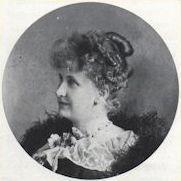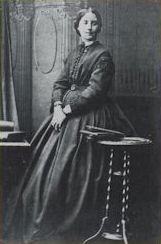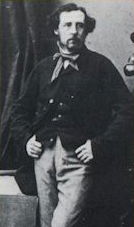Who was Edwin Lanseer Lutyens?
Edwin Lanseer Lutyens was born in London in 1869. He had rheumatic fever when he was young and therefore stayed at home rather than attending public school. In 1876 his mother acquired a second home in Godalming, and Edwin was able to spend half the year in the Surrey countryside. He developed a broad knowledge of traditional building techniques.
Life and Work
In 1885, he enrolled at the National Art Training School in South Kensington, but left without completing the course two years later. He became an articled pupil of Ernest George and Harold Peto in London. He stayed for only a year before setting up his own practice at the age of 19.
He met Gertrude Jekyll in 1889. Her direct and indirect influence on him and his career was vast. She introduced him to many of his clients and to Edward Hudson, editor of Country Life, who greatly enhanced Lutyens' career. After years of discussion between Lutyens and Jekyll they built her house at Munstead Wood in 1895-7. The house was well-received, and led to several other commissions.
In 1897, Lutyens married Lady Emily Bulwer-Lytton. He was obliged by her family to take out a large life insurance policy, which added to the couple's financial difficulties. His aristocratic marriage did not bring him aristocratic commissions, and for the most part he continued to meet his clients through Jekyll. In 1897 he had 25 commissions, including five new houses. A series of romantic houses in a vernacular style were produced over the next few years, as well as more eccentric commissions. Many were mainly villas rather than country houses on a traditional scale.
Lutyens became a national figure for his role in commemorating the dead of World War 1. He was asked by the Prime Minister in 1919 to design a ‘catafalque' in Whitehall for the peace celebrations. The cenotaph design was apparently completed the same day, and a permanent version was unveiled in 1920. Lutyens also advised on the design of war cemeteries in France, favouring a humanist approach rather than overtly Christian iconography.
Between the wars, Lutyens did considerable work on the exterior design of commercial buildings, but undertook relatively few domestic commissions. He was involved in the re-planning of London for the modern world, working on the highway development survey and as an advisor on the project to re-build Charing Cross Bridge. His design for the Metropolitan Cathedral in Liverpool was heralded as a masterpiece, but building work was interrupted by World War 2 and sadly never came to completion.
The war hampered many of his enterprises, and he began to suffer increasingly ill health. He was elected president of the Royal Academy in 1938 and gave much time to the institution. Lutyens died in London on New Years Day of 1944. The funeral took place at Westminster Abbey and his ashes were placed in the crypt at St. Paul's Cathedral.
Amongst his many achievements, he was knighted in 1918, elected a fellow of the Royal Institute of British Architects in 1906, elected an associate of the Royal Academy in 1913, awarded the royal gold medal for architecture in 1921 and received the Order of Merit in 1942.
Further reading:
Stamp, Gavin, ‘Lutyens, Sir Edwin Landseer (1869–1944)’, Oxford Dictionary of National Biography (Oxford: Oxford University Press, Sept 2004; online edn, Oct 2007) <http://www.oxforddnb.com/view/...; [accessed 17 December 2007]
Visit The Lutyens Trust for a more comprehensive Biography list.



All photographs have been kindly provided by The Lutyens Trust.
Associated Places
- Abbotswood
- Ammerdown House
- Amport Park
- Amport Park
- Ashby St Ledgers
- Ashwell Bury
- Ayscoughfee Hall
- Barrington Court
- Barton St Mary
- Berrydown Court
- Blagdon Hall
- Breccles Hall
- Brenchley Gardens, Maidstone
- British Medical Association Council Garden and Court of Honour
- Brooksby Hall
- Buckhurst Park
- Castle Drogo
- Central Square, Hampstead Garden Suburb
- Chawton House
- Chenies Place
- Cheyne Walk, Number 100, Chelsea
- Clifford Manor
- Copse Hill
- Daneshill House
- Eartham House
- Eaton Hall, Eccleston
- Ednaston Manor
- Folly Farm
- Framfield Place
- Gledstone Hall
- Great Dixter
- Great Maytham Hall
- Greywalls, East Lothian
- Hatch Court
- Heathcote
- Hestercombe House and Gardens
- Hethersett
- Holland House, Cropthorne
- Homewood, Knebworth
- Knebworth
- Knowlton Court, Nonington
- Legh Manor
- Lincoln's Inn Fields
- Lindisfarne Castle
- Little Thakeham
- Long Barn
- Lowesby Hall
- Magdalene College, Cambridge
- Marsh Court
- Mells Manor House
- Mells Park
- Mells Park, formal gardens
- Middlefield, Stapleford
- Middleton Park
- Miserden Park
- Munstead Wood
- Nashdom Abbey
- New Place
- Orchards
- Papillon Hall
- Penheale Manor
- Plumpton Place
- Putteridge Bury
- Redlynch Park
- Renishaw Hall
- Saunton Court
- Southampton Central Parks
- Sunshine Corner, Hampstead Garden Suburb
- Temple Dinsley
- The Deanery Garden, Sonning
- The Hirsel
- The Hoo, Willingdon
- The Hurlingham Club
- The Pleasaunce, Overstrand
- The Salutation
- Trafalgar Square, Westminster
- Trinity Square Gardens
- Tyringham
- Victoria Embankment Gardens, Westminster
- Victoria Park, Leicester
- White Lodge On-The-Cliff